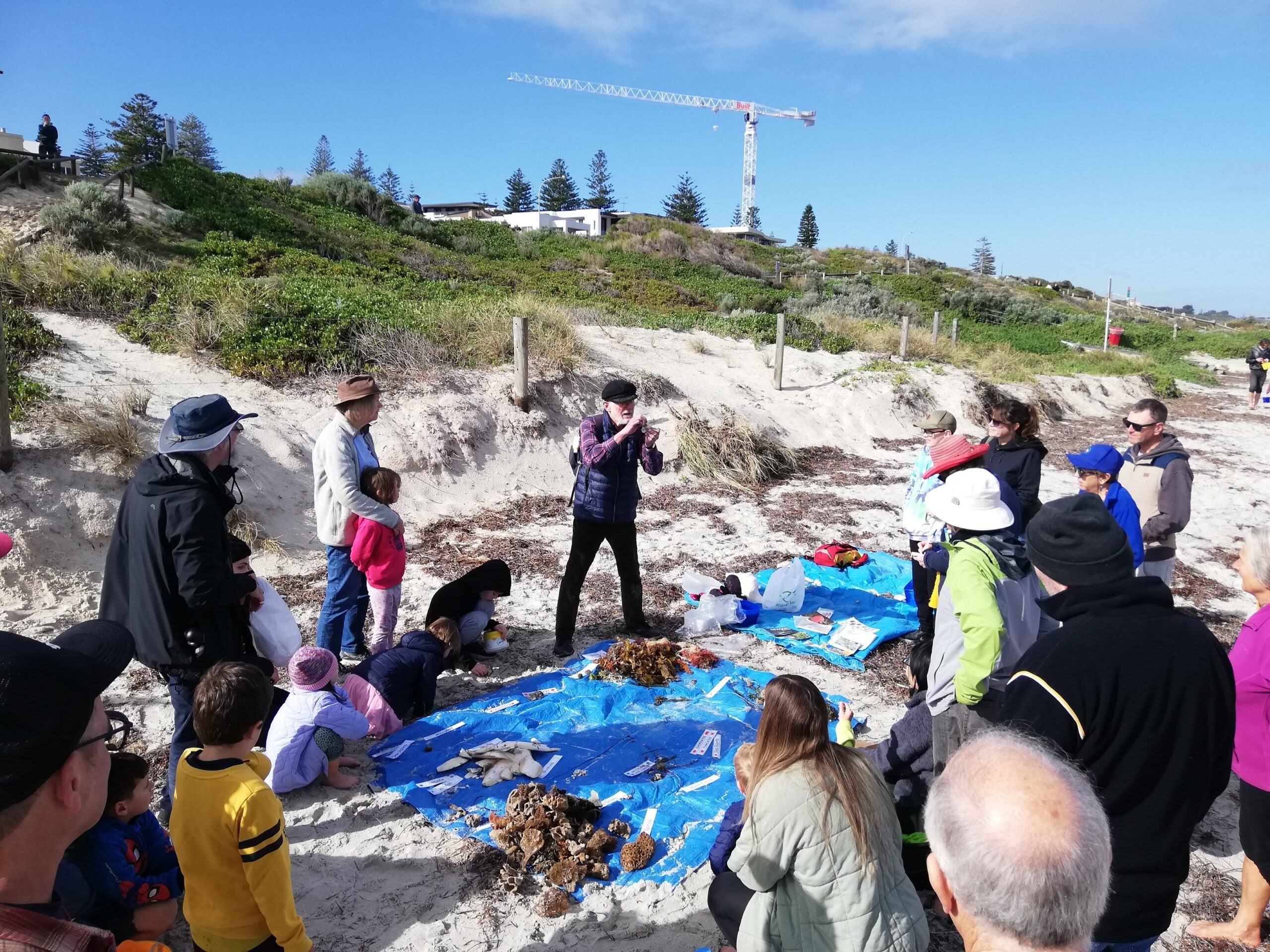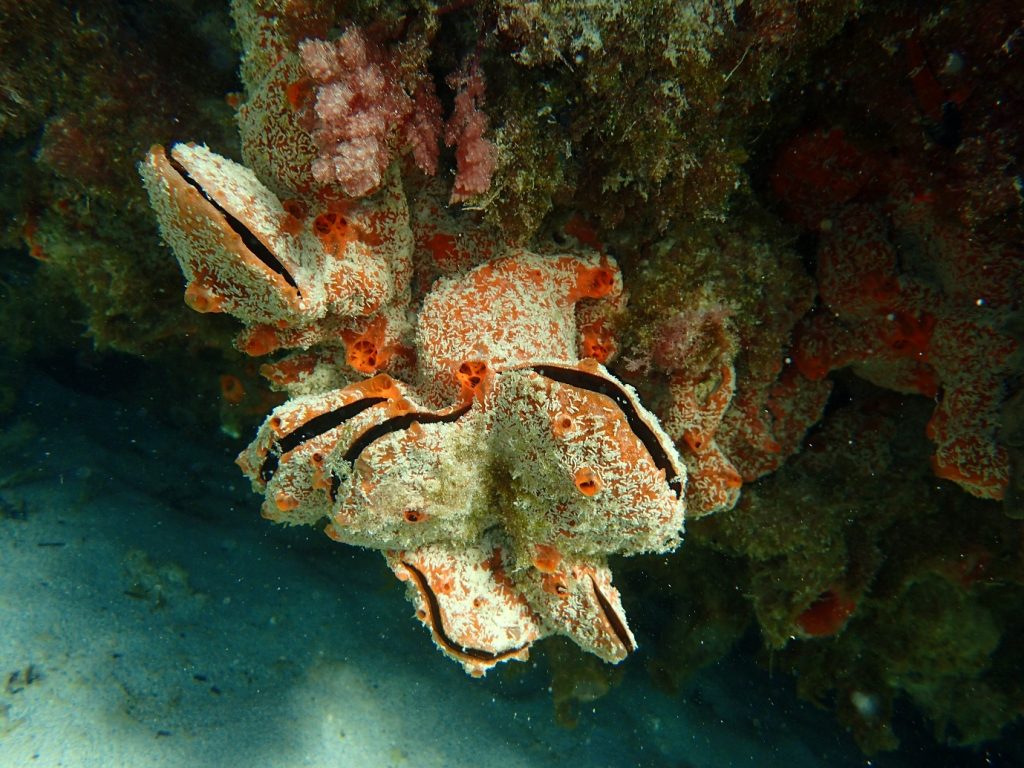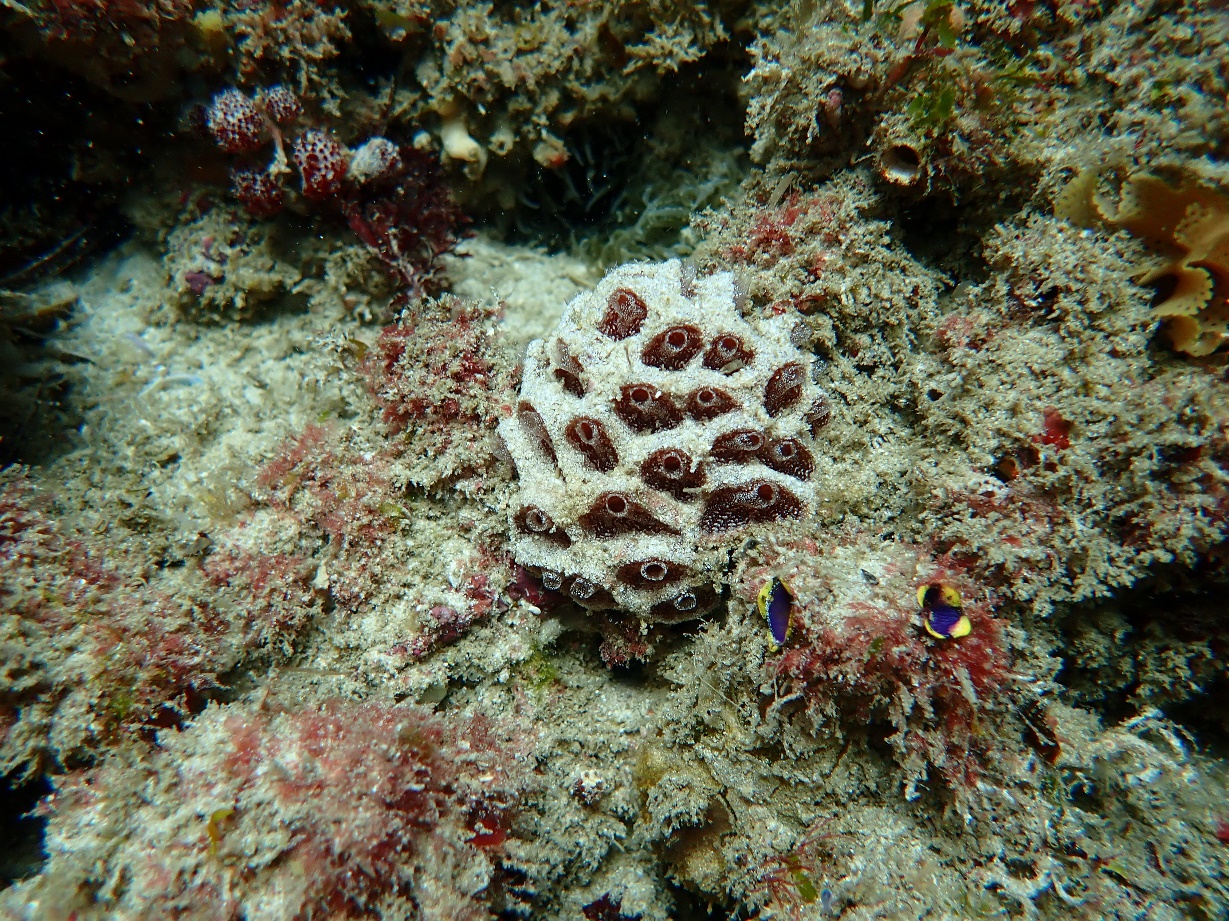Young Naturalists, Main Club 24th July 2022
We were lucky to have fine, calm weather for a beach sweep at South Cottesloe, led by Maureen Gardner, Steve Lofthouse and me. A good crowd turned up, about half of them non-members and a number of children. There were piles of fresh flotsam on the beach for us to fossick in. We placed our flotsam items under labels to classify them into the major groups (e.g. macro-algae, seagrasses, molluscs, echinoderms, bryozoa, etc.) and then under sub-groups (red, green and brown algae, bivalves, gastropods cephalopods, etc.).

Most groups were present, though there were very few mollusc shells (What is washed up depends on the wave patterns.)
There were a few Sea Tulips, which are a kind of sessile, Stalked Tunicate (Ascidian). These have a free-swimming larva like a tadpole, and evolutionary theory says that free-swimming ascidian larvae that became sexually mature led to the evolution of the vertebrates. From such humble beginnings came fish, amphibians, reptiles, birds and mammals, including our species.
Seagrasses are the descendants of land plants which have re-adapted to marine life. They are flowering plants with roots, stems, leaves and flowers. One of the seagrasses was the wireweed Amphibolus antarctica, and we found the seedlings of this species, which are equipped with a “comb anchor”. The seedling breaks off from its parent plant, to which it has been attached, and the comb anchor at its base attaches it to the sea floor, where it can sprout roots. Their pollen is spread through the water to fertilise female plants, which produce seeds.




There were a few Bluebottles (Physalia sp). Each one looks like an individual animal but is, in fact, a colony of specialist individuals. One becomes the flotation bladder, and other parts of the colony become the stinging, eating and reproductive parts, benefitting the whole.
There were many kinds of sponges (Porifera). Live sponges, as snorkelers know, are brightly coloured. They are multi-cellular, made of hundreds of individual cells with a skeleton of spicules. Each wafts water through the sponge, bringing oxygen and food (micro-organisms). But unlike most animals, they don’t have organs – the cells are all the same.
There were some cuttlebones, some of which had goose barnacles attached to them by a little stem. Cuttlebones are the internal skeletons of cuttlefish, which are cephalopod molluscs related to the octopus and the squid. The cuttlebones act as buoyancy mechanisms. We also found Ram’s Horn shells (Spirula spirula). These are the coiled skeletons of a small squid-like cephalopod that lives at extreme depths.
There were many other specimens, including sponges, turban shells, a puffer fish, coral, lace coral (Bryozoa) and worm tubes. We also noticed a group of Great Black Cormorants resting on the groyne, drying their wings in the breeze.
Mike Gregson

